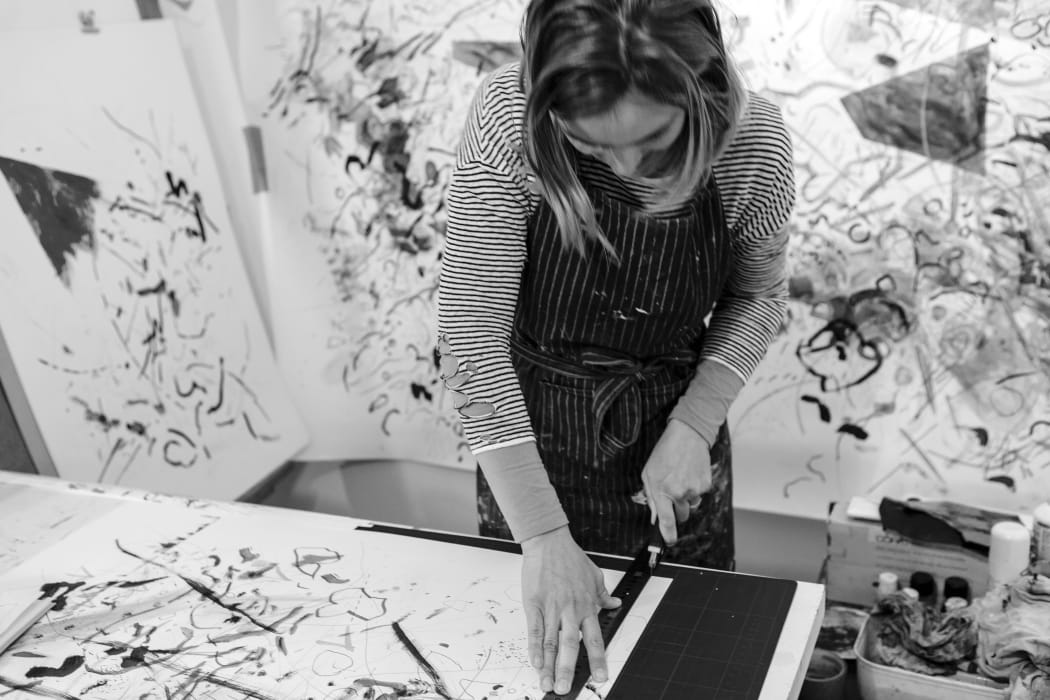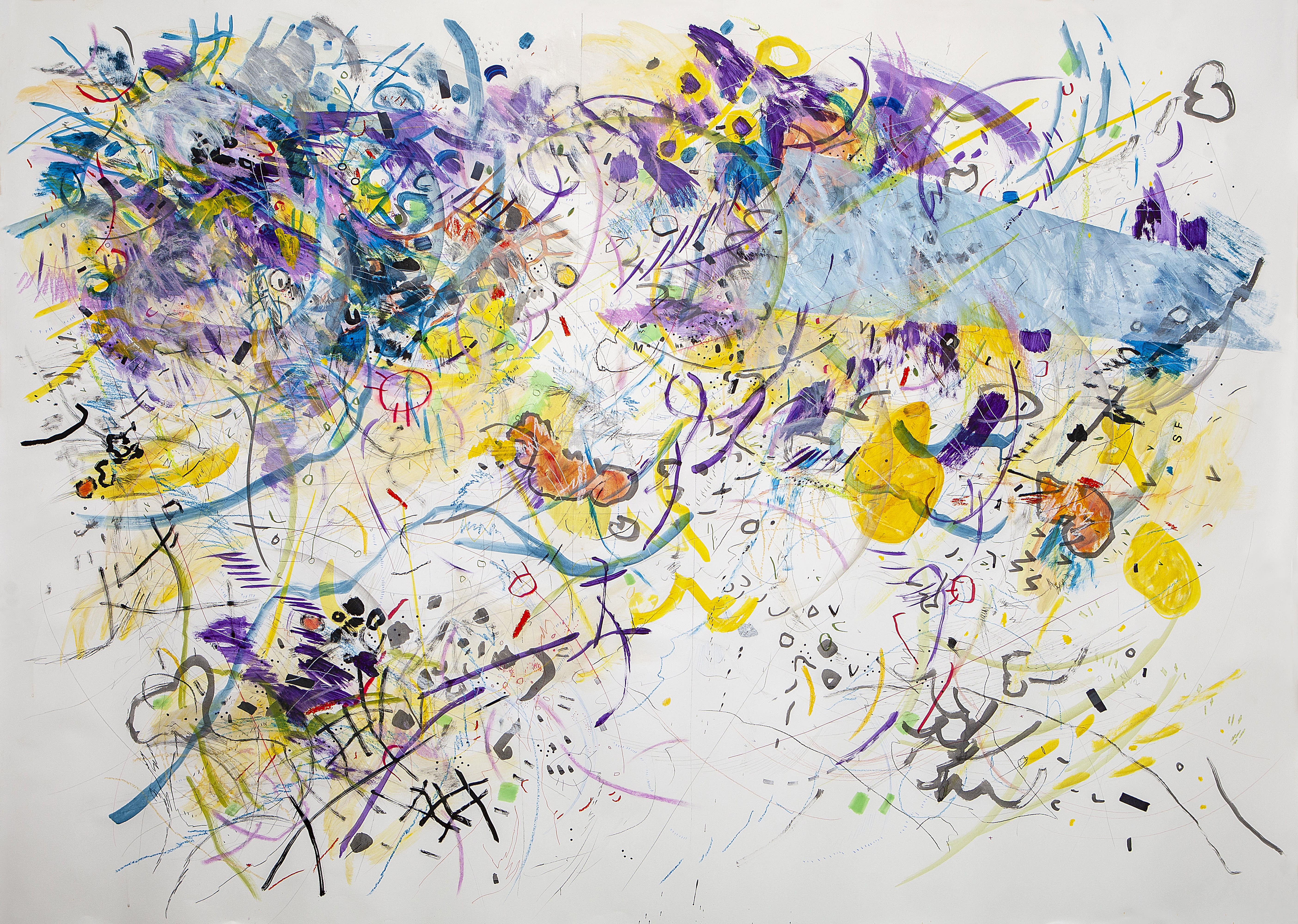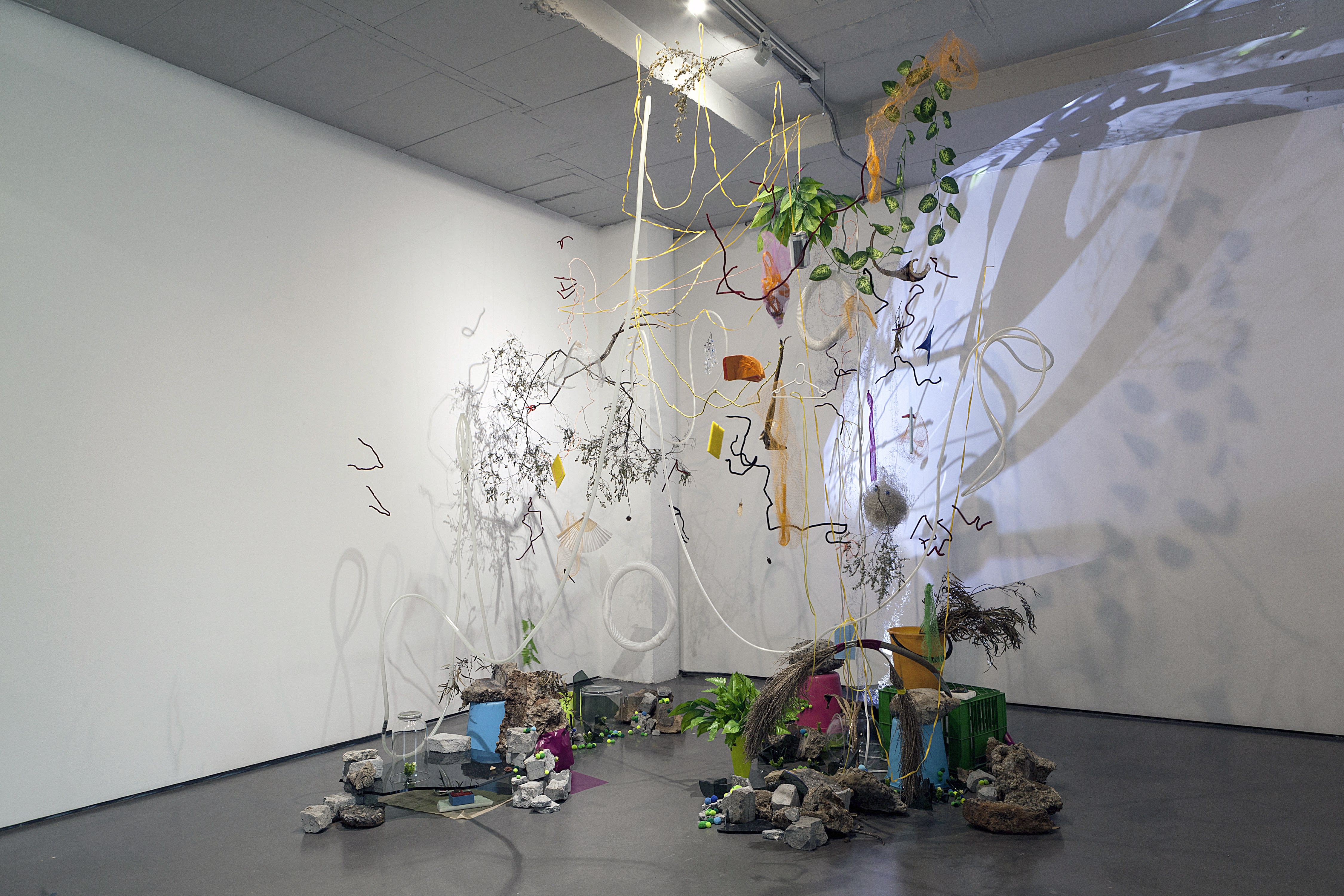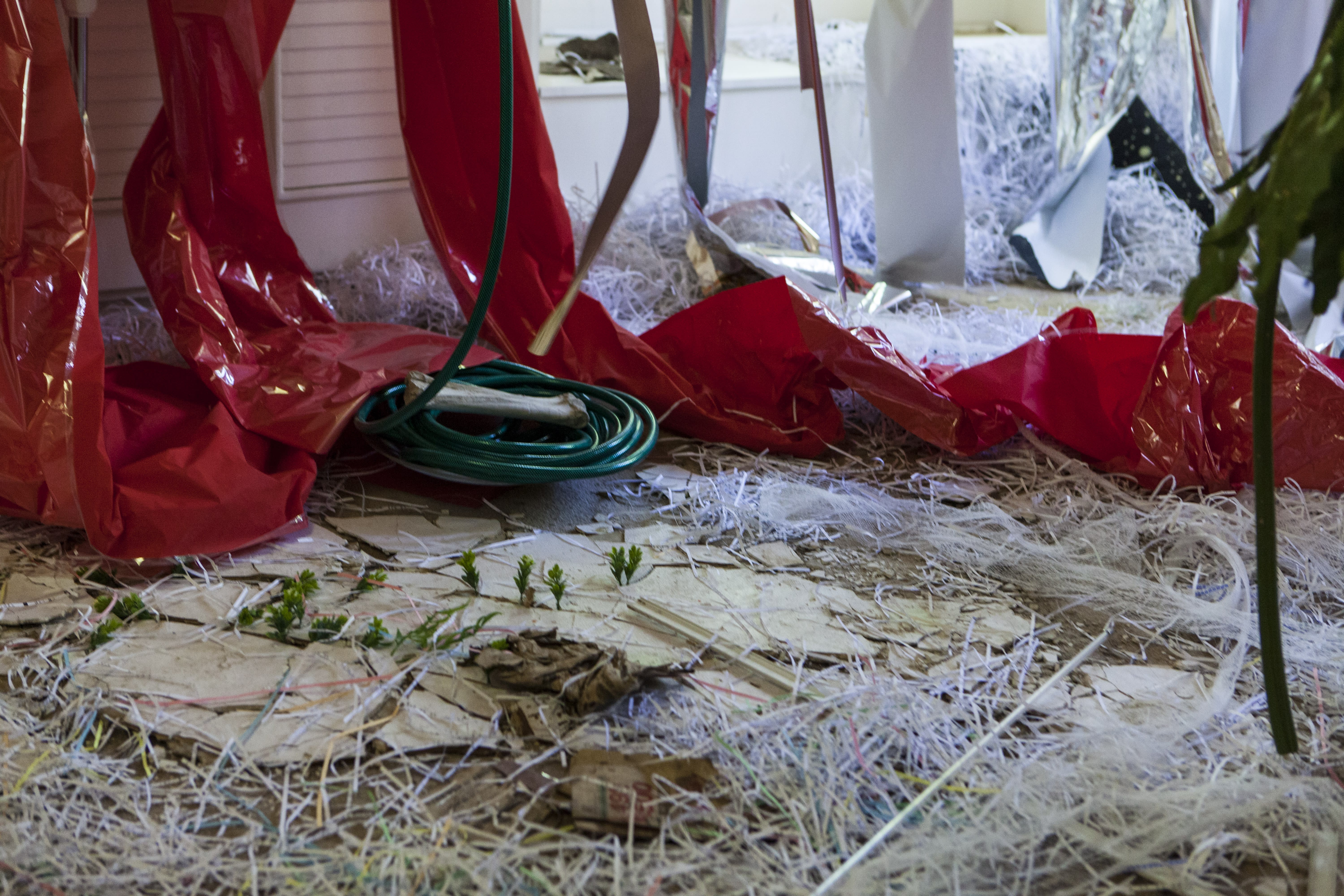
What draws you to explore themes of randomness, disorder, and the human tendency towards a binary world?
I suppose authenticity is what draws me to these themes. My upbringing was very chaotic, inconsistent, unpredictable, and turbulent so those themes feel authentic to what has shaped me as an artist in this world. The resistance of definition and embracing ambiguity and uncertainty through working with chance, chaos, and a provocation to undoing binaries that limit understandings are so because I believe nuance, uncertainty, and entropy are more authentic ways of being in the world. The oscillation between two binary opposites is also bound in the name I was given: Io, which can be interpreted in several ways and in one way as binary: 1 and 0. I can’t seem to get away from it! This is true to my personality as I constantly try to find an entangled balance between these thresholds of chaos/order, nature/culture, and so forth, divided in a dualistic, capitalistic, patriarchal world. Thankfully, this dualism and binary approach is beginning to come undone in the world. Complex, intricate, and nuanced ways of being are also starting to be recognized and permeate in many different ways.

© Io Makandal, The SF Chronic(al) II, 2020, Mixed media on Fabriano
Your practice includes drawing and installation, among other explorations. How has your artistic practice developed through the years?
I’ve always been interested in the materiality of things and in the ‘waste’ or ‘by-product’ of a process; the debris that gets discarded, left to decay. Furthermore, combining this with other elements that provoke a conversation around what material does while also having a deep love for the mode of drawing and what colour can evoke. Early on, I worked a lot with ‘drawing’ whether on paper or physically in a space with objects and materials in what I like to call ‘tactile drawings’. I move through many modes of working, sometimes maximally and at other times taking a more minimalist approach to the material and object. Recently I have been interested in working with very specific materials, such as concrete, clay, soil, plants, and how these agents can speak about our complex relationship to extractive development, entropic decay, and urban ecology. When I began my practice, I was trying to reconcile some personal histories obscured into broader concerns in society of waste and value. Over the years, I’ve come to recognize and articulate what I feel is relevant to the world in my preoccupations with making. A photograph, a drawing, an installation, or a living sculpture all work towards provoking a conversation around the human, non-human, and interspecies conditions and relations. I grew up between nature and the city and am based in Johannesburg, South Africa – a ‘post’-colonial city of extreme contradictions socially, racially, ecologically, economically. It is a place to work from that urges one to lean into the multiplex conditions. This all informs my practice.
How do you approach your practice and creation process (from gathering materials to putting pen to paper) while exploring entropy? Is the creation process chaos-based, or is there an order in mind when creating artwork or producing projects?
The creation process is quite orderly with a systematic building up of the material. I have specific methods that I start with before I am able to move on to the next. The collecting of materials is a constant. I need to be constantly open to material revealing itself to me because it could appear at any spontaneous moment. However, I have a set of lenses (themes) that I am looking through, so not all material is equal. At times, I will go looking for specific objects and materials and at others, they will jump out at me as I move through the city during preparation for an installation project. In drawing and painting, it's an entirely different mode: Here is a process of intuiting and distilling with abstraction whatever it is that I am currently focused on and thinking through. Abstraction is important here because I do not want to dictate the reading of a work. I want to allude to certain codes, significations so that the viewer may configure their reading through what is suggested, provoked. If the viewer takes the time to look carefully, a narrative will emerge. In one sense (although not limited to), what becomes entropic is the collapse of time, working with a duration of time in my practice. Entropy is the overarching concept of how to relate to a world that is conditioned by states of unpredictability.

©Io Makandal, The Grit and the Pearl, 2019, Multimedia Installation
Currently, we live in a world that seems to be at either extreme of the proverbial pendulum, all while societies also seem more interested in fluidity and a non-binary spectrum way of life. Do you see a possibility in which the pendulum could stabilize?
No, it never should stabilize. That would be against inertia and what good is that? It is in the moving-in-between and through, the webbing, connecting nodes, and allowing for contamination, where novel things occur. Where things grow and evolve. In a sanitized stability, there would be no life. Nature is proving this to us over and over again.
Your work also explores the duality between being and doing. Your use of the weed poetically touches upon our complex relationship to nature and how we may dispose of it according to our utilitarian perception. How do you relate this to the role of art in society?
I disagree that being and doing is a duality. In a sense, they are one in the same. My working with marginalized plants is a metaphor for thinking about marginalized positions, histories, and making space for those conversations to be had in an overtly white, western, patriarchal world. Who is the ‘we’ that disposes of it? Art is a form of story-telling, right? And it is this ability to tell stories, to recount memory, to imagine and fabulate potentialities and possibilities (and probabilities) that make us human. That creates culture and organizes society, which some thinkers used to define humans as separate from nature.

©Io Makandal, Entropy, detail, 2018, site specific installation
Are there artists that you admire or that have influenced your practice?
Yes, plenty, of course! Both directly and indirectly. I have many cerebral and aesthetic mentors who influence or inform how I work. Working in South Africa, it is not often that I get to experience the works of artists I admire in person. However, there have been defining moments where I have had the opportunity to see works by artists I love. In my undergrad university days, I would look for hours at reproductions of Jessica Stockholder’s installations in books and on the internet. I would try to simulate in my mind how it would feel to be standing among such works; to experience them viscerally (the same could be said about Sarah Sze). In 2016 I was on a residency in New York and I went to see one of her solo exhibitions that happened to be open at the time. Admiring it as a student, I was positively overwhelmed to be immersed in her work. Two other moments would be on two separate visits to Berlin where I visited Ai Weiwei's exhibition ‘Evidence’ in 2014 and most profoundly, the 10th Berlin Biennale. “We don’t need another hero”, curated by Gaby Ngcobo in 2018, presented artists predominantly from the Global South. The scale of these presentations was enthralling. Dineo Seshee Bopape continues to inspire me, as well. There are other artists and moments, but those stand out from the pack.
How do you see your practice developing in the future?
It’s hard to say. There are so many factors that will determine how it develops further. I imagine my current fixation with soils and plants will endure for a while as I explore the myriad of topics that those materials speak to. But I hope that my work continues to enrich people’s lives and understandings of the worlds we create and live in.
Interview conducted by Dominique Suberville